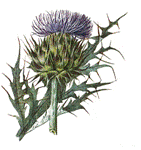Papers in the Biological Sciences

Svata M. Louda Publications
Document Type
Article
Date of this Version
2005
Abstract
Controversy exists over estimation of ecological risk in biological control. At present, the risk to the rare, federally listed Pitcher’s thistle (Cirsium pitcheri) in North America from Rhinocyllus conicus, a biological control weevil now feeding on many native thistles, is unknown. We hypothesized that quantification of host specificity and potential phenological overlap between insect and plant would improve assessment of the magnitude of risk. In laboratory host specificity tests, we found no significant difference in R. conicus feeding or oviposition preference between the rare C. pitcheri and the targeted exotic weed (Carduus nutans) or between C. pitcheri and Platte thistle (C. canescens), a closely related native North American species known to be affected by R. conicus. In a garden environment, R. conicus spontaneously found, oviposited, and developed completely on C. pitcheri. Taller plants with more flower heads were significantly more vulnerable, suggesting that the greatest impact is likely to be on individuals that generally contribute the most to recruitment and population persistence. For eight sites in two national parks over three years, the calculated period of expected R. conicus activity overlapped 99% and 78% of the flower heads initiated by C. pitcheri in the southern and the northern park, respectively. A demographic model suggests that population growth rate (λ) of C. pitcheri will decrease from 0.9897 to 0.8686, while time to halve the population will decrease from 66.9 to 4.9 years, under the conservative assumption that oviposition by R. conicus on C. pitcheri will occur at the same rate as on the related C. canescens. Calculated decreases in λ and t0.5 are larger if the rate of oviposition actually observed in the laboratory tests is used. These results indicate that the weevil poses a serious quantitative, demographic risk to the threatened C. pitcheri. The study supports the suggestion that ecological data can be used to improve the quantification of risk to native nontarget plant populations within the potential physiological host range of a biological control insect.


Comments
Published in Ecological Applications 15:1 (2005), pp. 234–249. Published by the Ecological Society of America.